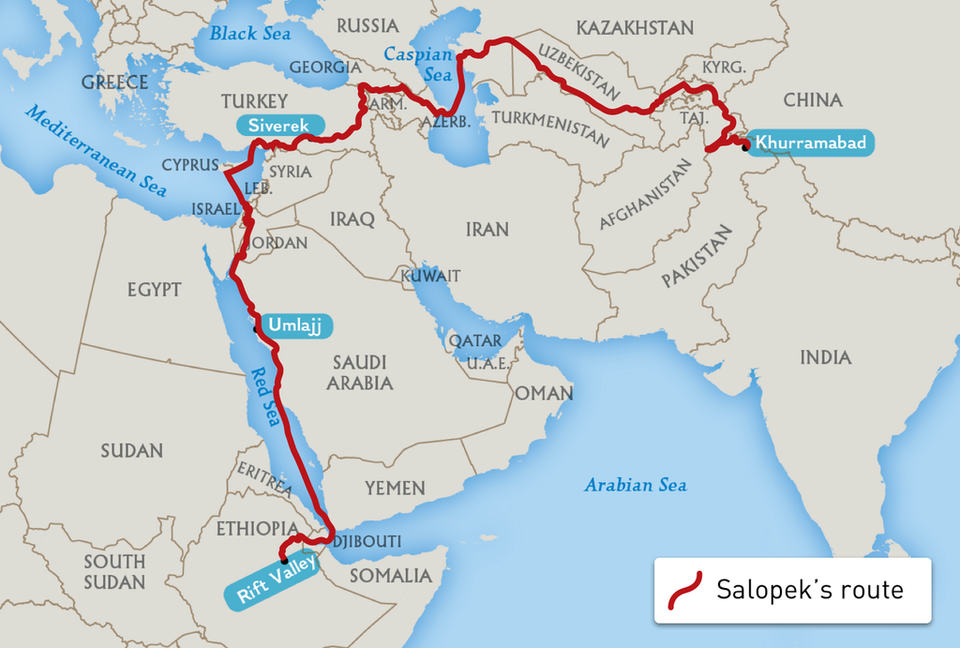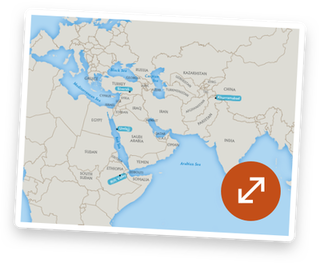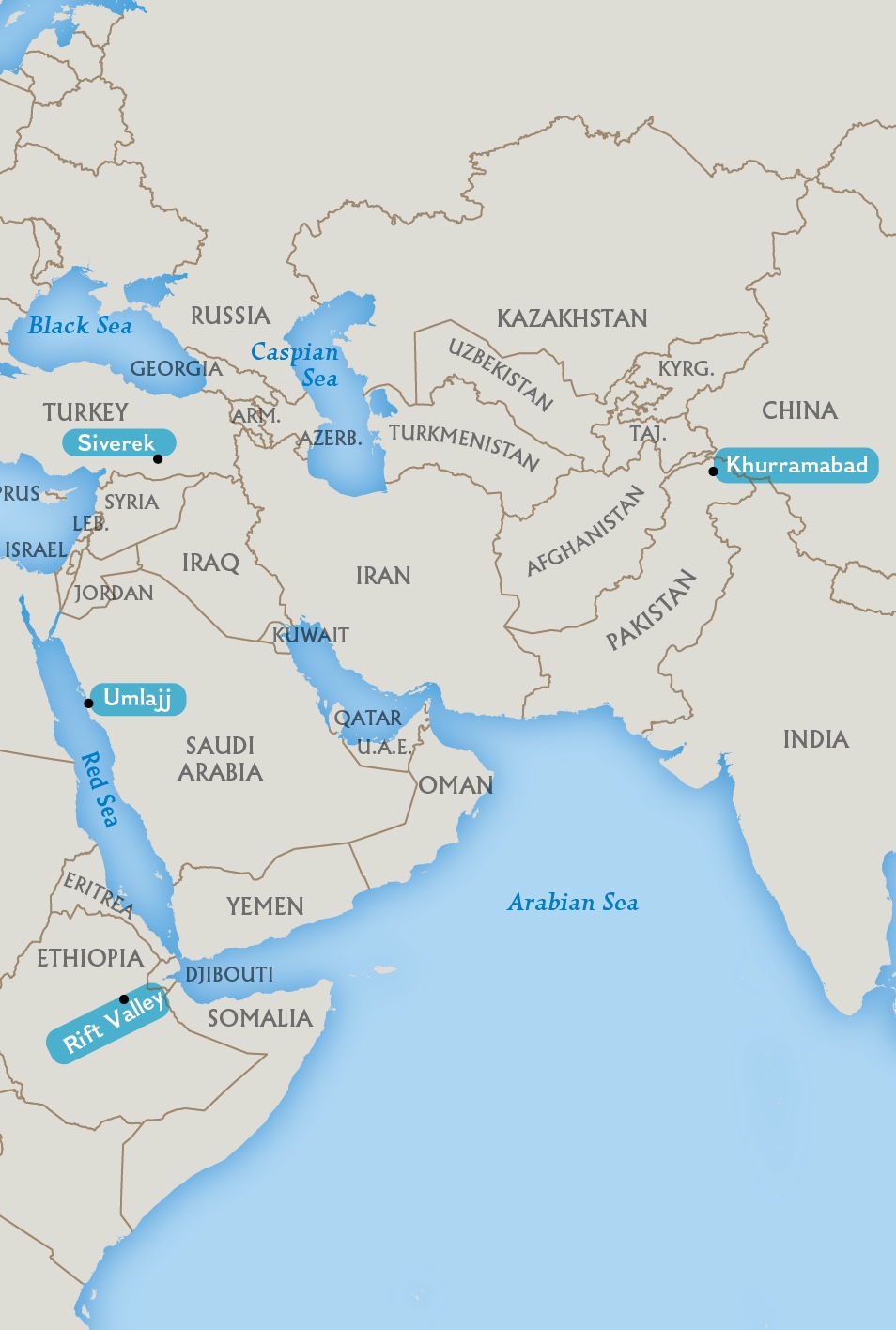
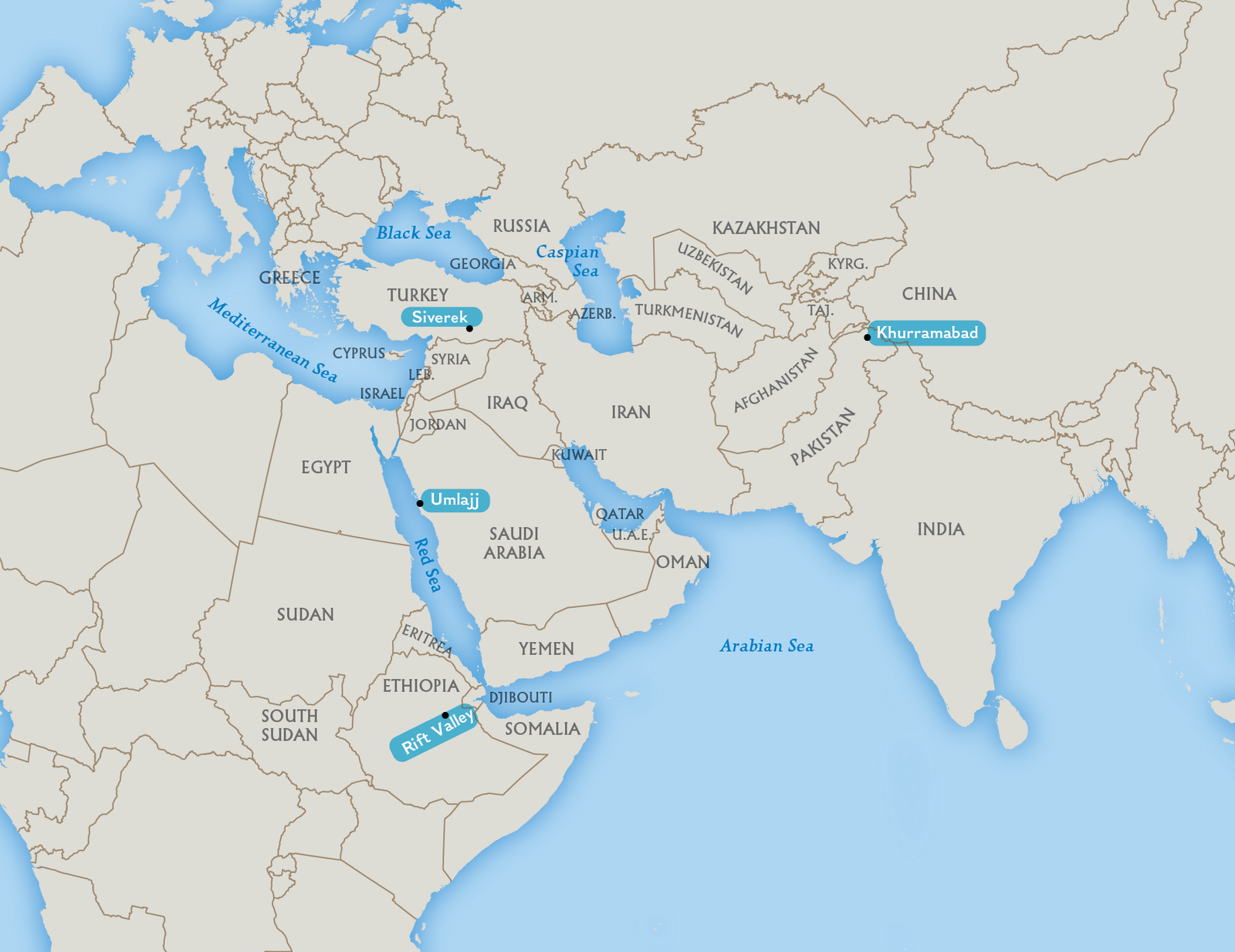
SoleBrothers
RiftValley,Ethiopia
January31,2013
Salopek’stripwilltakemillionsofsteps,sohisfootwearisprettyimportant.InEthiopia,therearen’tmanyshoe options.
Howdoyoujudgeaman?Lookathisshoes.Shoescantellalotaboutaperson.It’sodd,then,tobeinaplacewheremillionsofpeoplewearthesamestyleofshoeseveryday.InEthiopia,mostpeoplebuycheap,plastic sandals.
Afewofthecamelhandlersonthispartofthejourneyworelime-greenplasticsandals.ThesurfaceoftheRiftValleyiscoveredinfootprintsstampedbytheseshoes.Theylookthesame,butthewearersarenot.Thefootprintsidentifydifferentpeople.Ourguidespotstracks.Heknowsthewearer.“La’adHoweniwillbewaitingforusinDalifagi,”hesays.Andhewas.

ManyEthiopianswearthesamestyleofshoe.
Awad’sRefrigerator
Umlajj,SaudiArabia
October30,2013
Salopekandhisguidesmustcarryeverythingtheyneed.Carryingwateracrossthedesertisessential.Butwhosaidanythingaboutitbeing cold?
Thefirstmodernpeople,orHomo sapiens,walkedoutofAfrica.Wedon’tknowwhattheyexperienced.Butwhatiscertainwastheirneedtocarrywater.Whatdidthefirsthumansuseascontainers?Nooneknows.Canteensorbucketsmadeofnaturalmaterials?Agurba,orgoatskinwaterbladder?
AwadOmran,mycamelhandler,hashisownsolutiontoquenchourthirst.Hebuildsa thermos.
Awad’scold-watercanteenismadefromasack,cardboard,plastictwine,andaplasticwaterbottle.

Thewater-coolingthermosismadefromjunkfoundaroundafarm.Hewrapsalargewaterbottlewithcardboard.Hewrapsasackaroundthecardboard.Thenhemakesalonghandlefromstring.Hehangsitonasaddle.Soon,thewettedcardboardcoolsourdrinking water.
Mule-ology
NearSiverek,Turkey
December11,2014
Salopekrarelytravelsalone.He’susuallyjoinedbyaguideandpackanimalstocarrysupplies.Here,hewritesabouthismulewhiletravelingthroughTurkey.
Firstthingsfirst:Amuleisnotadonkey.Adonkeyisasmallcreaturewithlongears.Amuleistheoffspringofadonkeyandahorse.Themalesarecalledjackmules.Thefemalesarecalledajennyormolly.
Itdoesn’tmatterwhatyoucallamule,though.Itwon’tanswertoit.Eachofmywalkingpartnershascalledourwhitejennybyadifferentname.OneguidecalledherBarbara.AnothercalledherSweetie.Myphotographercallsher Snowflake.
MypreferenceisKirkatir,aTurkishnamemeaning“greymule.”But,likeallmules,sheanswerstonolabel.Shecomeswhenshefeelslikeit.Andshedoeswhatshepleases.Thankfully,thatincludescarryingoursupplies.
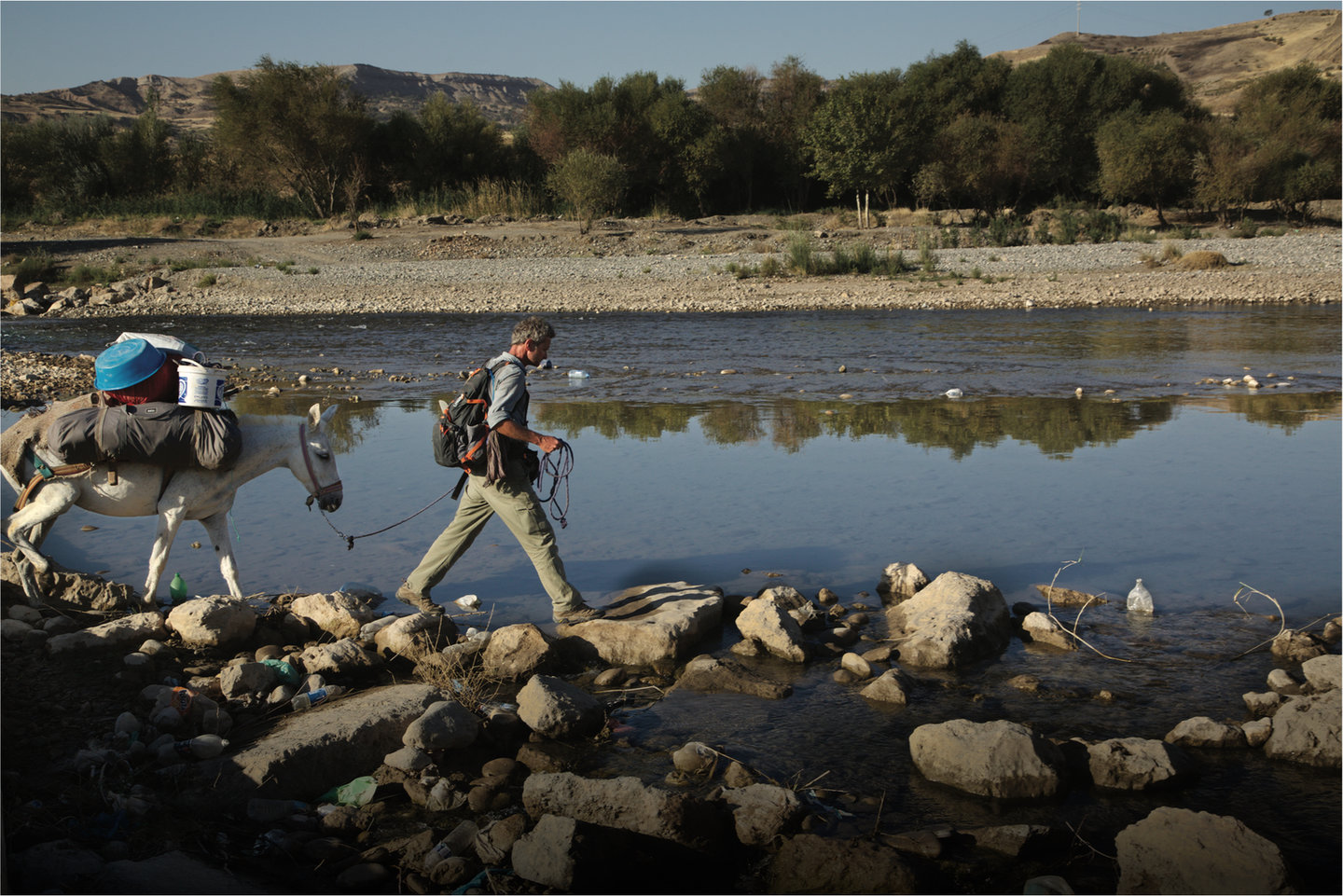
PaulSalopek’smulecarrieshissuppliesinTurkey.
WalkingGrass
NearKhurramabad, Pakistan
January02,2018
Alonghistravels,Salopekmeetsmanypeoplegoingabouttheirdailylives.Here,inPakistan,hecomesacrosssomefarmersharvestingandcarryinghay.
Themountainsherearecoldanddry.Inthesummer,meltingsnowstreamsdown.Itwashesawayatroadsandvillages.Infall,pasturesbecomedryagain.Thenfarmersharvesthay.
AmongthefarmersareRehmanAliandBibiPari.Theyareoldnow.Theirsonshavemovedtobig cities.
Buttheyremaintoharvesttheirrockyfieldsthemselves.IcanbarelyhelpParicarryherload.Yet,toher,itseemslike nothing.
Istandbyasshecarriesthehay.Shesays,“Thankyou,brothers,”forthesimpleactofwatchingher work.

Afarmercarriesaheavyloadofhay.
